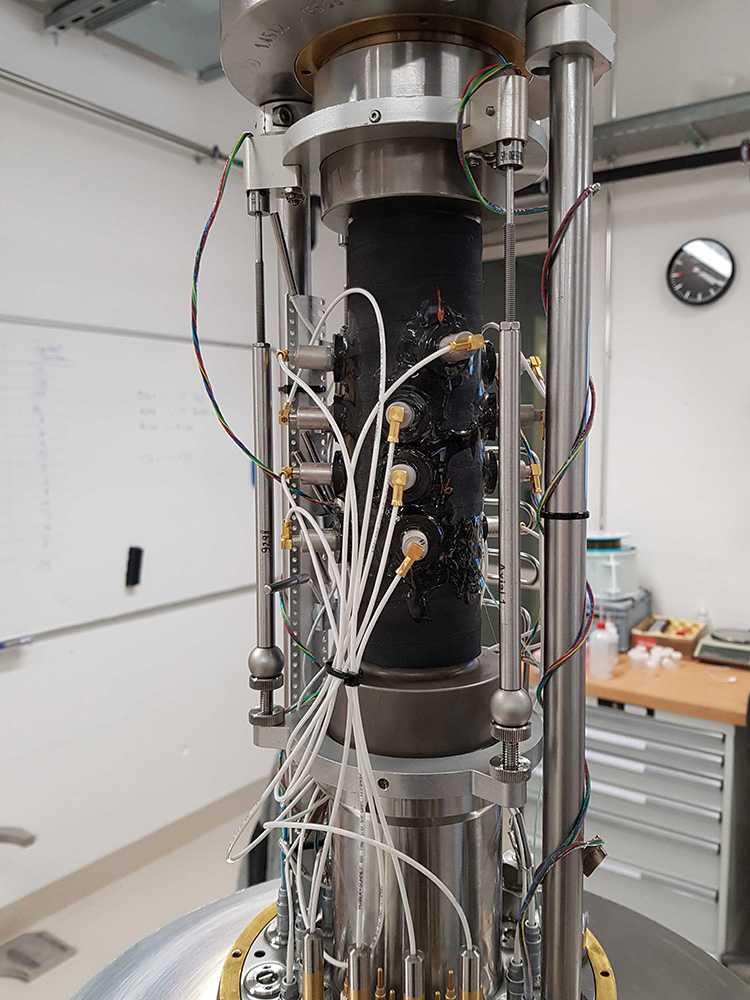2023-08-10
Examining microphysical rock properties of the Rotondo granite

The main scientific work of the BedrettoLab research takes place in boreholes which usually undergo thorough investigations. With the different sensors in the boreholes of the BedrettoLab, the research team already has a deep knowledge of the rock volume on a macroscopic level. Recently, experiments in the Rock Physics and Mechanics Laboratory (RPMLab) at ETH Zurich took place to learn more about the behaviour of the Rotondo granite on a microscopic level.
Dr. Claudio Madonna explains the work of the RPMLab: “Imagine the RPMLab as a scientific playground where rocks take center stage. In a similar manner to architects testing various materials to construct sturdy and secure structures, we investigate rocks to understand their strength and behavior. It's like experimenting with building blocks, yet instead of constructing towers, our endeavor revolves around discovering how rocks endure and withstand pressure. Through the meticulous study of rocks in our laboratory, we have the opportunity to unravel the secrets of geological processes, such as the formation of mountains and the storage mechanisms of underground resources. Our goal is to explore the fascinating world of rocks to unlock the scientific secrets and stories that lie within them.”
In an experiment, scientist Dr. Paul Selvadurai took a 10 cm long core that had been taken from a borehole in the BedrettoLab. With the special equipment called LabQuake at the RPMLab, it is possible to put a rock cylinder under pressures of 170 MPa that can even make it break. In this experiment, only an amount of 10 to 15 MPa was used which corresponds to the pressure of putting 10,000 to 15,000 tonnes of weight on one square meter. The cylinder was equipped with 16 sensors that can send and receive ultrasonic wave signals. Then it was put into a closed capsule which was clamped into a press. This press is capable of applying pressure to the rock in distinct directions, accurately simulating the stress conditions found in nature. While the different pressure levels were put on the rock cylinder, the wave signals were sent through it.
It is already known, that seismic signals travel through rock anisotropically, meaning that their travelling directions may change depending on stress, density and the existence of small microcracks within the rock. To gain a comprehensive understanding of natural rock systems, scientists must analyze both macro-scaled physics using data obtained from boreholes and micro-scaled data from experiments conducted at RPMLab. Borehole data provides valuable insights into the behavior of rock formations on a larger scale, offering information on factors such as stress, density, and the presence of microcracks. Simultaneously, micro-scaled data from RPMLab experiments allows researchers to investigate the intricate details of anisotropic wave propagation and its correlation with stress conditions. By combining these two sources of information, scientists can obtain a holistic understanding of how seismic waves interact with the rock matrix, enabling a deeper comprehension of the seismic behavior exhibited by granitic geothermal reservoirs.

